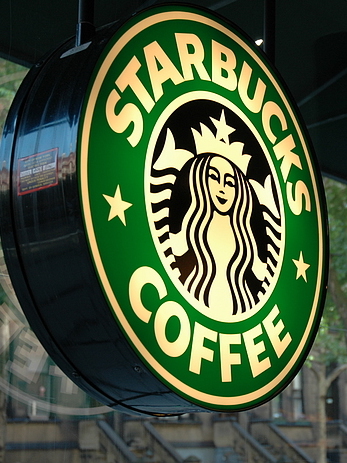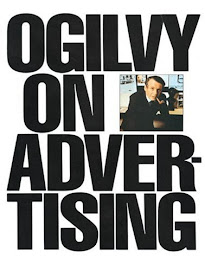
and that is why i was dumb founded when i read in the business papers that starbucks stock market price has significantly lost value and that its ex-CEO, howard schultz was being called out of retirement to once again head the company.
more than that, what i found interesting in that news article, was what shultz said - starbucks will discontinue serving hot and steamy breakfast fare. he gave a very simple reason why they were stopping it - the aroma coming from the steamy breakfast food was interfering with the aroma of brewed coffee! it's not about product or pricing, its about aroma!
that was music to my ears as a marketing man. in fact that sentence in that article sounded like a full orchestra playing a great symphony to me. this man reeks with excellent brand equity skills and knowledge. it's not a surprise that he was THE MAN responsible for the " world dominance" success of starbucks. it is not only the fact that starbucks occupy the best locations on main street corner main street, it is the fact each starbucks look and most specially feel exactly the same. you don't even have to know the name, all you need to do is to step into one, sit down, look at the decor, the arrangement and feel the ambiance and you will know you are inside a starbucks outlet. starbuck's success is anchored only on one thing - its brand equity. there's no other way to explain why people are willing to pay P110.00 for a friggin cup of coffee that's served in a paper cup and spoons made out of a plastic strip that you can't use to scoop coffee with.
starbucks success is founded in superior delivery of the BRAND EXPERIENCE. (more on this in succeeding posts.)
when you hear a man say he will stop selling food products because the aroma interferes with the aroma of coffee being brewed, that's convincing proof that starbucks' success is nothing more but brand equity and that starbucks is on the road to recovery.

this news article details more changes in starbucks:
Starbucks Plans Return to Its Roots
By BRAD STONE
Published: March 20, 2008
SEATTLE — Howard D. Schultz, the chief executive of Starbucks, announced sweeping changes on Wednesday for the company as it seeks to reconnect with customers who have left for competitors or pared back their coffee budget in hard economic times.
The initiatives are intended to restore an authentic coffeehouse experience to the stores and, in turn, re-energize an ailing stock that has lost half its value in the last 15 months. In front of 6,000 investors, employees and analysts at the annual shareholder meeting on Wednesday, Mr. Schultz introduced an improved automated espresso machine that grinds coffee for each drink and has a lower height that will allow customers to see baristas making their beverage. He said the company would roll out the Swiss-made Mastrena machines to three-fourths of Starbucks stores by 2010.
Mr. Schultz also announced the acquisition of the Coffee Equipment Company, the four-year-old Seattle-based maker of the Clover coffee machine, which brews a more expensive, higher-quality coffee one cup at a time. The price was not disclosed. Starbucks will roll out Clover systems in select markets.
Mr. Schultz described a host of other plans: a pungent new coffee blend, a partnership with Conservation International to certify environmentally responsible whole-bean espresso products, and a rewards program for users of the Starbucks customer card.Beginning in mid-April, users of the customer card will be able to customize their drinks — with soy milk or vanilla, for example — at no cost.
The announcements are intended to help Starbucks hang on to customers in the face of intensifying competition for brewed coffee from Dunkin’ Donuts and McDonald’s, which is widely introducing espresso beverages this year.
“This was more of a position statement. They are going back to their core,” said Sharon Zackfia, a securities analyst with William Blair & Company. “They are saying, ‘We are not going to change who we are, we are going to defend turf aggressively.’ ”
Mr. Schultz obliquely referred to the powerful new rivals in an afternoon question-and-answer session with reporters. “A lot of people are making unique claims about coffee and what they do,” he said. “What’s interesting to me is that they are not coffee roasters.”
But Mr. Schultz tried largely to keep the focus on the company’s internal challenges and future moves. “This is the first time the U.S. business is under pressure; it’s a character test,” he said. “But it’s not about the economy. We don’t want to use that as an excuse. And it’s not about the competition. Don’t believe the media hype. There’s no coffee war going on. This is about us. “We somehow evolved from a culture of entrepreneurship, creativity and
innovation to a culture of, in a way, mediocrity and bureaucracy,” Mr. Schultz said.
His remarks combined self-criticism with musings on the turbulent economy, which he noted was reducing traffic to Starbucks stores. The company faces a hurdle that may be impossible to overcome in the short term: Will penny-pinching Americans, in the grip of an economic downturn, still pay $4.10 for their daily dose of white chocolate mocha-flavored coffee? Mr. Schultz said several times that the economy looked grim for the rest of the year, particularly in regions of the country hit hard by the subprime mortgage crisis.
Starbucks has also suffered from rising wholesale prices for coffee and dairy products. In the face of those pressures, Mr. Schultz returned as chief executive 11 weeks ago after serving eight years as chairman. He quickly announced 600 layoffs and the closing of 100 of the least profitable Starbucks stores in the United States. He also said Starbucks would stop selling a line of breakfast sandwiches that were served warm, creating an aroma that overwhelmed that of the coffee in stores.
At the heart of the new announcements is a desire to revisit the company’s early devotion to high-quality coffee. The new coffee blend, called Pike Place Roast, is a reference to the location of the first Starbucks store. Starbucks will introduce the blend in stores next month. Baristas will be directed to brew smaller batches of coffee and refresh the coffee in urns every 30 minutes. Today, coffee can sit in Starbucks’s urns for as long as two hours.
Mr. Schultz called the new blend “a coffee so fresh that those people who drink it with milk and sugar will want to drink it black because of the sweetness.”
Also on Wednesday, Starbucks introduced a new online community, mystarbucksidea.com, where Mr. Schultz and other managers will contribute to a corporate blog. Customers will also be encouraged to visit the site to make suggestions and interact with employees. The site opens on Thursday.
Looking further ahead, Mr. Schultz said that the company planned to introduce health- and wellness-related food and drinks and energy beverages later in the year.
Wednesday’s meeting represents what Mr. Schultz hopes will be a striking turnaround in the speed and spirit of innovation at Starbucks. In the first half of the decade, the company thrived on product introductions like the Frappuccino, a frozen coffee drink. The last innovation widely thought to be successful was the Cinnamon Dolce Latte — in early 2006.
Mr. Schultz partly has his own relentless ambition to blame for the woes at Starbucks. In the last two years, citing ever-larger expansion goals, the company doubled its number of stores to more than 15,000 in 44 countries — many in comically close proximity to one another and to competing coffee shops.
Analysts say new stores cannibalized traffic from existing stores and thinned the ranks of well-trained Starbucks managers and employees. The company then tried to create efficiencies among stores, adding technology like massive automated espresso machines, which have little of the romance or aroma of the old hand-operated machines.
In the second half of last year, Starbucks’s same-store sales — a significant number watched by Wall Street — declined for the first time.
Shareholders and employees began lining up for Wednesday’s event as early as 6 a.m. As a barbershop quartet sang and employees dressed in Starbucks’s green aprons handed out free coffee, many shareholders expressed excitement over Mr. Schultz’s return.
“I’m glad Howard is back at the helm. Starbucks is his heart,” said Jan Melin, a retiree and
shareholder from Seattle who was there with her husband, Bill. “I have every confidence he will turn the company around so this stock can take our family on our 50th wedding anniversary trip next year.”














No comments:
Post a Comment
we encourage everyone to post a comment, their own analysis or views on any of the posts in WAWAM!
we have put all comments to be moderated to make it easy to monitor them and so that WAWAM! can respond to them.
we will not tolerate rudeness or idiocy in this blog. comments that contain personal attacks on any person or posters in this blog will be rejected.
otherwise, we will allow all other comments.